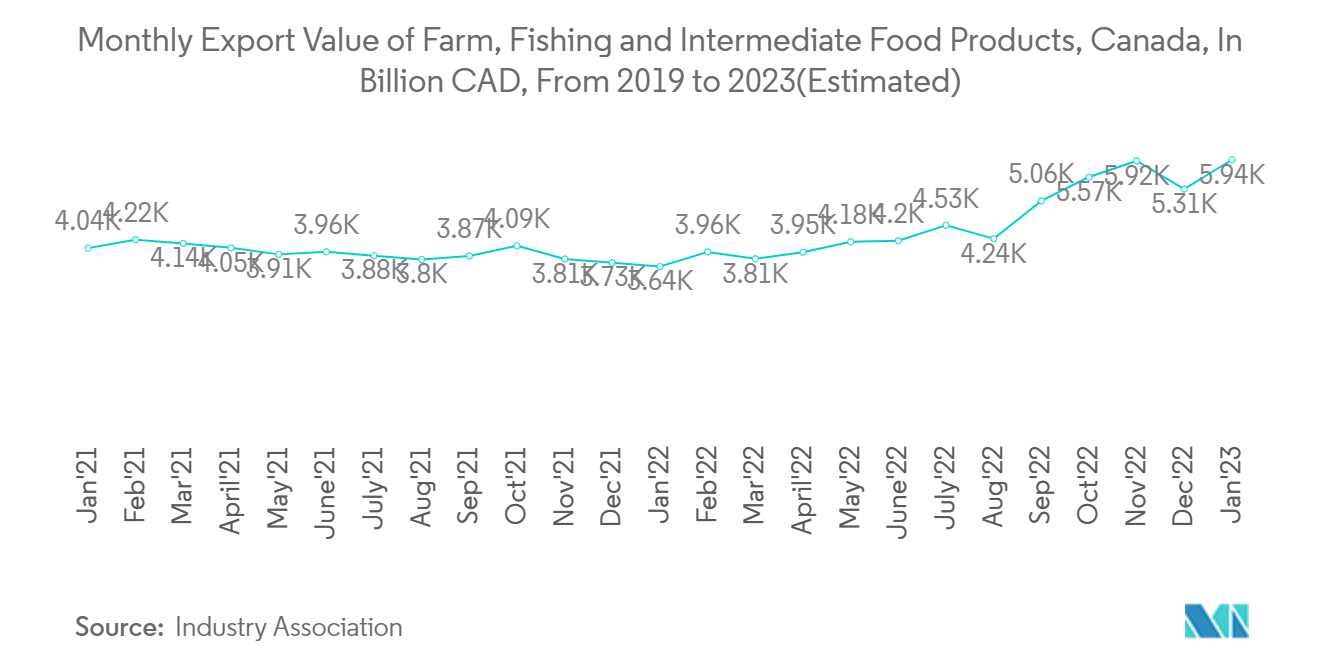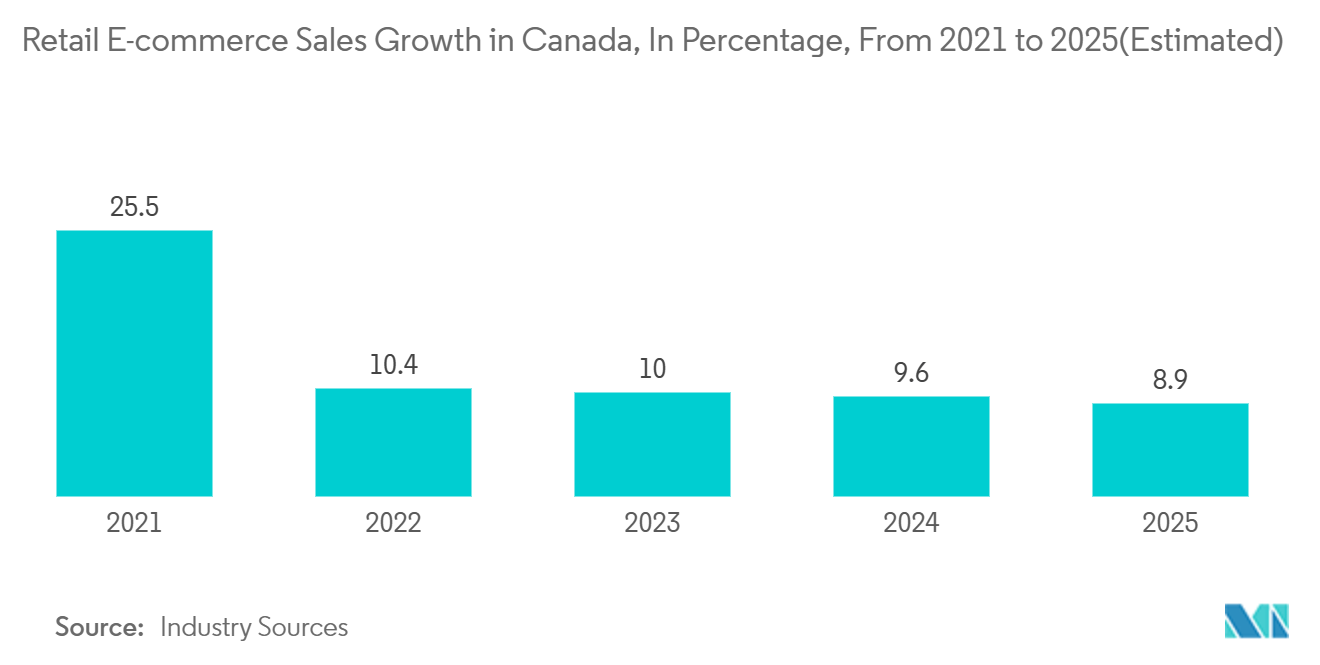Market Trends of Canada Cold Chain Logistics Industry
Rise in Exports of Perishable Goods Driving the Demand for Cold Chain Logistics Services
Canada's exports of goods rose by 4.2% in January 2022 while imports rose by 3.1%. Canada's merchandise trade surplus with the rest of the world increased as a result, rising from a revised USD 1.2 billion in December 2022 to USD 1.9 billion in January 2023. In January 2022 total exports increased by 4.2% to USD 67.0 billion. All product categories saw growth in January 2022 with the exception of energy products. More than two-thirds of the rise in overall exports came from the increase in the farm, fisheries, intermediate food items, motor cars, and parts, as well as metal and non-metallic mineral products. Exports other than energy goods increased 6.1% to a record-high USD 51.6 billion. Real (or volume) terms exports as a whole increased by 5.3% in January 2022.
Exports of agriculture, fisheries, and intermediate food items grew 11.9% in January 2022 to reach USD 5.9 billion, a record level that was only marginally higher than that seen in November, after seeing their first decline in four months in December. The production of agriculture products revved up in the fall of 2022 and has been driving exports ever since, amid a harvest that significantly outperformed the previous one and robust worldwide demand. The rise in January 2023 was mostly attributable to exports of wheat, intermediate food items (canola oil), and other crop goods (soybeans).

Growth of E-commerce and Increasing Consumer Choices
Retail e-commerce sales have decreased as of July 2022 after experiencing a dramatic rise at the start of the pandemic, although they are still significantly higher than pre-pandemic levels. Retail e-commerce sales increased from 3.9% in 2019 to 6.2% in 2022 (July year to date) as a share of all retail sales. The percentages of retail e-commerce sales during the pandemic's peak in 2020 and 2021 were 6.6% and 6.9%, respectively. Retailers were hurt by a second wave of shop closures during the first half of 2021, which caused the share of retail e-commerce in total retail sales to a peak that year. In 2022, retail e-commerce sales continued to remain elevated in some subsectors, while in others, the resumption of in-store operations has led consumers and businesses to transition closer to pre-pandemic shopping preferences. Amazon dominates the entire e-commerce and shopping sector, with a robust presence in Canada's computers and electronics category. Its success is mainly due to its wide offerings, ranging from electronics to books, streaming, and television. That is, Amazon Canada attracts a diverse range of customers. Internet access provides an essential link to the rest of the world for residents in remote communities in Northern Canada, but delivering high-speed services remains costly and difficult. As of January 2022, 55 per cent of Canadians made online retail purchases with their mobile devices, and this trend is growing. Millennial consumers (ages 18-34) lead the movement, with 47% of these shoppers purchasing via digital devices at least once a week.
The Canadian E-commerce market is very similar to that of the United States, and it shares some of the same trends as retailers to the south. Hybrid purchases, "Click and Collect," and "omnichannel" consumers ordering products online and taking them home in a brick-and-mortar store seem to be two trends shaping the Canadian e-commerce market. The Canadian E-commerce market generally markets through social media because the return on investment by using social media is constantly improving, and retailers are increasingly spending marketing dollars on social media ads. In Canada, there are several methods for internet shopping to collect a payment, the most common of which are credit card-based - Interac Online, MasterPass, and PayPal -. Still, some vendors also offer the option of prepaid cards or prepaid vouchers. MasterCard is Canada's most popular credit card, accounting for a 53.6 % market share. In terms of consumer preferences, young Canadians are more willing to make mobile purchases and are more receptive to mobile advertisements. Another preference in Canada is for video advertising: according to Com Score, mobile commerce (m-commerce) is rising, owing to smartphones' and tablets' increasing mobile connectivity. Digital advertising has surpassed TV advertising revenues and is poised to become Canada's preferred advertising medium.

